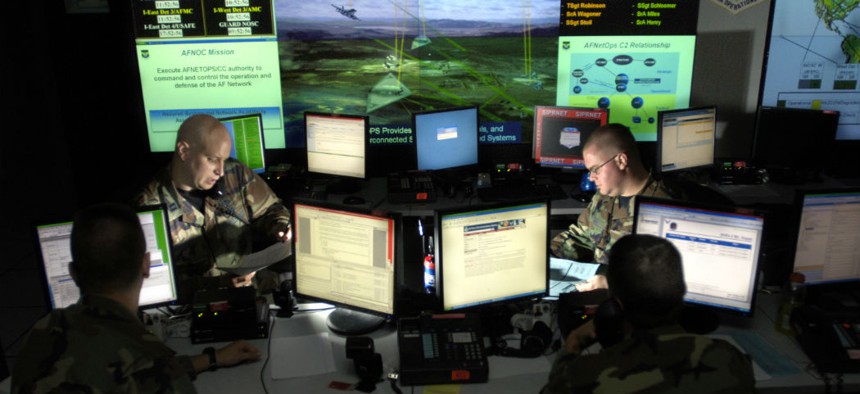Army looks to expand size and scope of cyber war unit
The Army’s Cyber Solutions Development unit is already expanding the number of cyber war soldiers and is growing its mission scope.
Although it is only two months old, the Army’s Cyber Solutions Development detachment (CSD), a unit designed to quickly respond to and fill offensive and defensive gaps in the Army’s cyber needs, faces a wide breadth of missions for its small number of capable soldiers.
The unit, stood up on July 25 and organized under the 780th Military Intelligence Brigade at Fort Meade, MD, seeks to centralize some of the development of cyber tools and response efforts of the Army under a single, flexible team.
A statement made at the time of the unit’s founding states that in past instances, “a new capability request from a CMF [Cyber Mission Forces] team was often limited in responsibility to developers assigned to that single team.” CSD responds to projects ordered by Army Cyber Command that stem from combatant commands, U.S. Cyber Command, and the National Security Agency.
A primary concern of the unit’s leaders is meeting the growing needs of the Army in an environment where many, if not most, problems can be directly or indirectly tied to cyber concerns.
“We’re resourced for the mission we have today,” says Lt. Col. W. Michael Petullo, lead developer of the Cyber Solutions Detachment, but he says, “there is a tremendous amount of work to be done, both on the offensive and defensive side of cyber. Our challenge now is to scale our efforts so that they can meet the needs of the Army.”
In addition to expanding its size in its present structure, sources close to the unit also mention the Army is making a determination regarding what a battalion-sized equivalent would look like.
The Army declined to comment on ongoing missions CSD is supporting. However, a past statement made at the time of its founding mentions, “support to contingency operations, Cyber Electromagnetic Activities Support to Corps and Below, and in support of Army efforts to secure weapons and vehicle platforms against cyber vulnerabilities,” as missions in which it had already played a role.
Additionally, a source close to the unit says one mission they have recently been tasked with is assisting the Army in responding to drone-based threats.
For its wide variety of missions, CSD must also contend with the small number of soldiers who are capable of serving as technically-proficient quick-responders. “I already have a couple dozen uniquely talented soldiers,” Petullo said, “but I need to find six to eight more of each of them.”
Petullo, who recently taught computer science at West Point, cites programs like the Army’s Tool Developer Qualification Course and the NSA’s Computer Network Operations Development Programs as ways in which to train soldiers for the tasks they face in CSD, but he also mentions they take years and require a preexisting aptitude in the subject.




